…dal lontano 1902
Il Bagno Santini, detto poi nel 1902, Bagno Bertuccelli, viene costruito quando Firenze è ancora capitale provvisoria d’Italia, sul finire degli anni sessanta di due secoli fa, e si può quindi considerare “coetaneo” del Bagno Balena, Bagno Nettuno, Bagno Felice, che gli sorgono a poca distanza, e come questi è costruito su palafitte e corredato di rotonda sul mare, con cabine che hanno accesso all’acqua grazie a scalette a pioli.
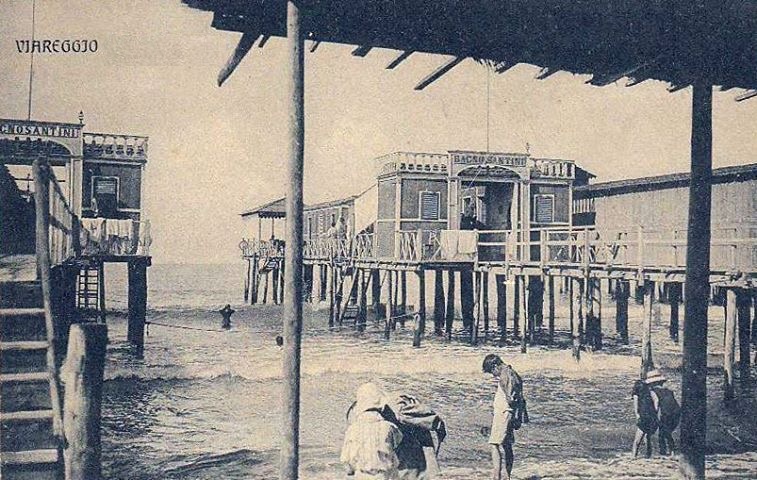
Al tempo vi lavora, come bagnina, Clorinda Rossi, sposata con Samuele Bertuccelli, un maestro d’ascia che grazie alla sua genialità saprà creare il pattino, il mezzo di soccorso che i bagnini adotteranno presto in sostituzione della scialuppa di salvataggio.
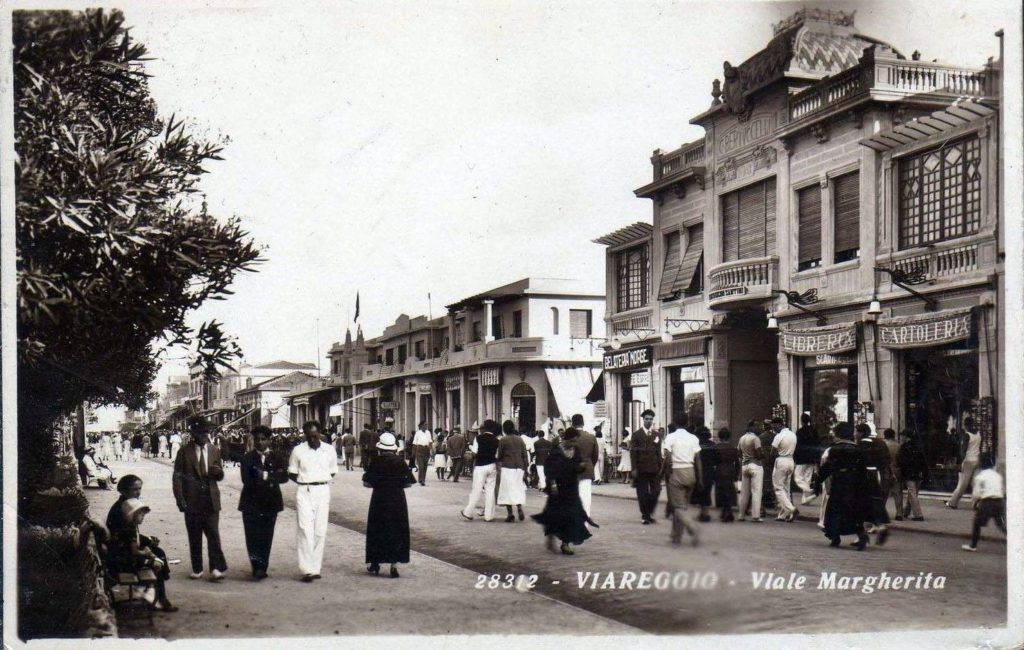
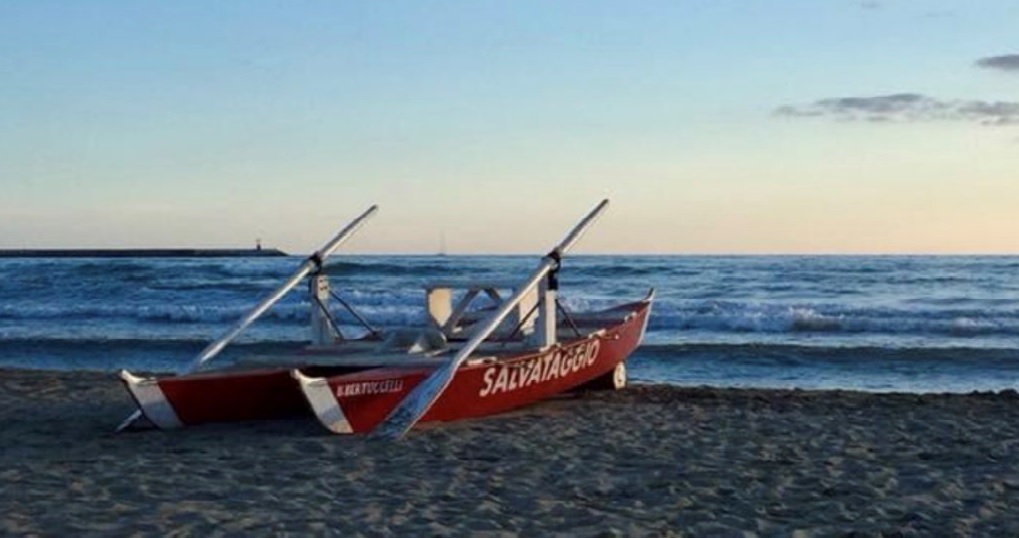
Nel 1902 i Santini cedono la loro concessione la quale verrà acquistata dai coniugi Bertuelli dando cosi origine al Bagno Bertuccelli.
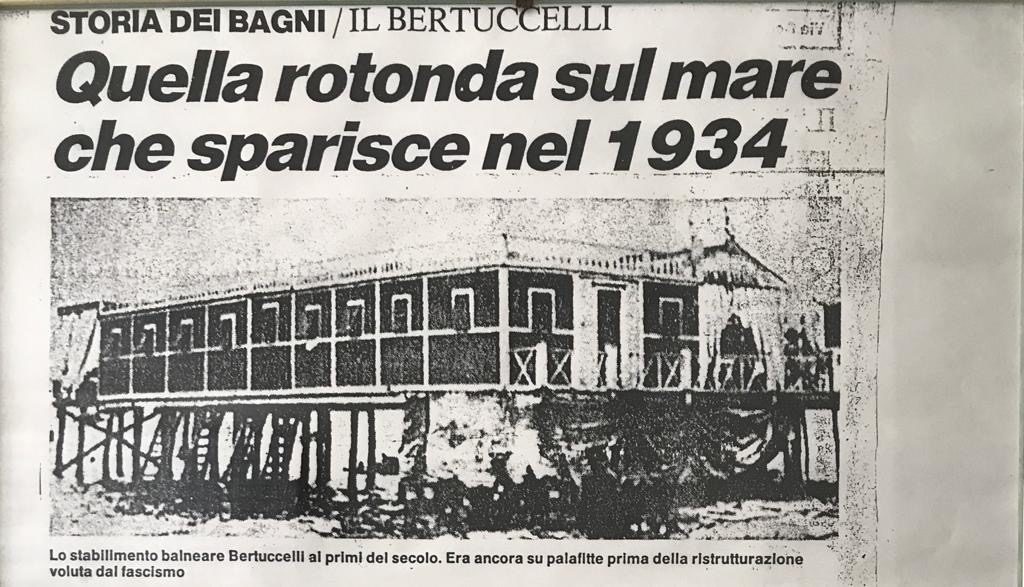
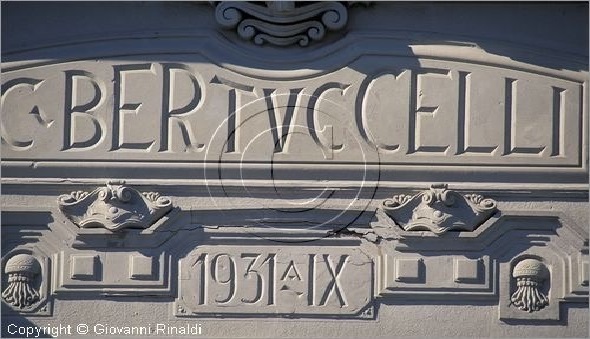
Arriva l’era fascista e nel 1934 viene smantellata la rotonda sul mare ed il Bagno Bertuelli si assesta sull’arenile sui suoi 25 metri lineari di spiaggia e 60 cabine. con arrivo della guerra il Bagno verrà smantellato su ordine dei tedeschi; solo nel 1946 con aiuto della figlia Iolanda Bertuccelli il Bagno verrà rimontato con più spazio, quindi maggiori comodità, per i servizi e cabine ridotte di numero (35), ma spaziose , rimarrà tale fino al 1998 quando sarà ristrutturato dai figli Rinaldo e Italina Cipriani.
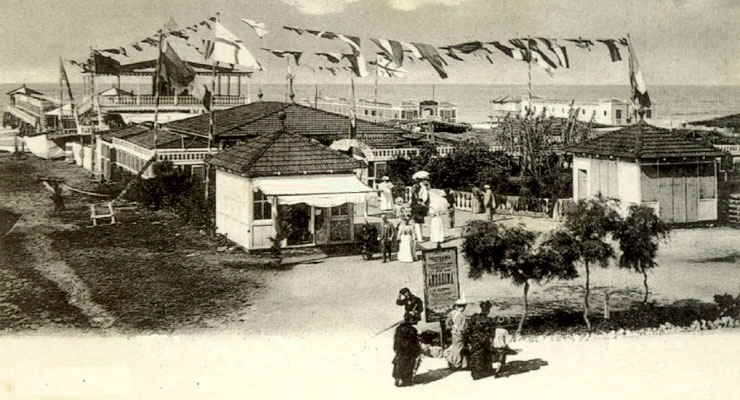
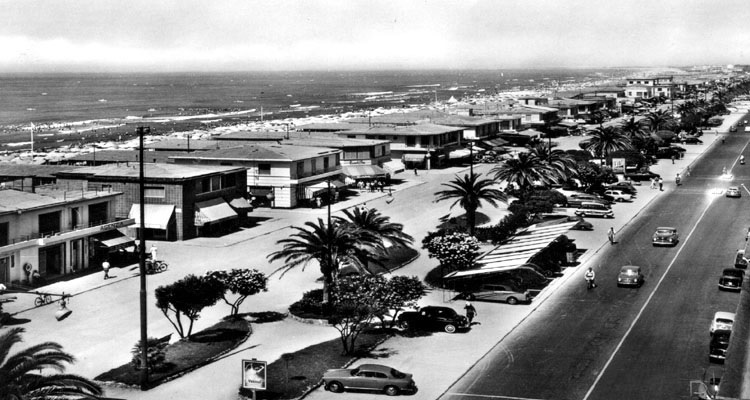
Il Bagno The “ Santini ” Bath called later on in 1902 “ B. Bertuccelli Bath ” was build when Florence was still the temporary capital of Italy, at the end of the sixties two centuries ago. Therefore we can say that it is old as the “Balena bath”, the “Nettuno bath ” and the “Felice bath” are. It was situated closed to these baths and was built on a pile work, completed with a round terrace bordered with cabins which access to the sea is through wooden stairs.
At that time, Clorinda Rossi was working there as “Bath Coordinator” : She is married with Samuele Bertuccelli, a carpenter who created, thanks to his own genius, the “patino ” mean of rescue adopted by the beach lifeguards to replace the rescue boat.
In 1902 Santini sells their licence which is purchased by the Bertuccelli family giving so the origin to the “Bertuccelli Bath ”.
During the Fascism period, in 1943, the round terrace is demolished and the “Bertuccelli Bath ” organise itself on its 25 linear meters of beach and 60 cabins. During the war, upon orders given by the German, “Bertuccelli Bath” is dismantled. Only in 1946, with the help of their daughter Iolanda, “Bertuccelli bath” is re-assembled with more space, therefore more comfort, for services and with a reduced number of cabins (35) but bigger. It will remain like this till 1998 when he will be re-styled by the daughter and son Italina and Rinaldo Cipriani.
Le Bain “Santini”, appelé ensuite en 1902 le “Bain B. Bertucelli” a été construit quand Florence était encore la Capitale provisoire d’Italie, à la fin des années 60 d’il y a deux siècles et par conséquent on peut considérer qu’il a le même âge que les Bains “Balena”, “Nettuno”, “Felice” qui sont voisins et comme eux il est construit sur des pilotis et complété par une terrasse ronde bordée de cabines dont l’accès à l’eau s’effectue grâce à des escaliers de bois. A l’époque, Clorinda Rossi y travaille comme “Gouvernante du Bain”. Elle est l’épouse de Samuele Bertuccelli un maître de hache qui, grâce à son génie créera le “patino” – moyen de secours que les maîtres nageurs adopteront à la place de la chaloupe de sauvetage.
En 1902 les Santini cèdent leur concession qui sera acquise par les époux Bertuccelli donnant ainsi l’origine au Bain Bertuccelli. L’époque fasciste arrive et en 1943 la terrasse ronde est démontée et le Bain Bertuccelli s’installe sur ses 25 mètres linéaires de plage et 60 cabines. Pendant la guerre le Bain est démonté sur ordre des Allemands; seulement en 1946, grâce à l’aide de leur fille Iolanda Bertuccelli le Bain sera remonté avec plus d’espace et par conséquent plus de confort pour les services alors que les cabines seront réduites à 35 mais plus grandes. Il restera comme cela jusqu’en 1998 date à laquelle il sera re-structuré par les enfants Italina et Rinaldo Cipriani.
